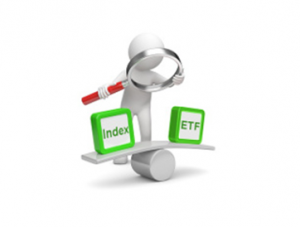May
2022
Investing Basics: How do ETFs Work?
DIY Investor
13 May 2022
 ETFs enable you to gain diversified exposure to a stock market, sub-sector or asset class by investing in just one cost effective and easily traded product.
ETFs enable you to gain diversified exposure to a stock market, sub-sector or asset class by investing in just one cost effective and easily traded product.
ETFs operate just like mutual funds with the big difference that they are listed on the stock market which means that whereas traditional funds can only be bought into or cashed out of once a day, you can trade ETFs whenever you like during normal market hours just like other share.
Because ETFs are index-tracking funds, there are no expensive fund managers or analysts to pay for which makes them much cheaper to run and own then managed funds – yet ironically, over the medium term, index-tracking funds beat most actively managed funds anyway.
Physical and Synthetic ETFs
With just a single ETF purchase, an investor can effectively track the performance of a stock market index of hundreds or even thousands of listed companies and they can do the same with government and corporate bonds and with different commodities and currencies. There are two different kinds of ETF:
- Physical ETFs track an index by buying the underlying assets of the index with the same weight as in the index, in order to mirror its rise and fall.
- Synthetic (or swap based) ETFs where the ETF provider enters a contract with an investment bank to provide the return of a particular index in exchange for a fee.
To construct a Physical ETF the provider purchases all or a selection of relevant securities from within the index to be tracked – a FTSE 100 index tracker holds all of the companies in the index in proportion to their weighing.
If HSBC bank made up 7% of the FTSE 100 index, then the ETF provider would put 7% of its fund’s assets into HSBC shares and as the value of these holdings fluctuate, they track the index’s performance.
An ETF’s holdings and an index’s constituents may not always match precisely and a provider may hold a sample of the index that it believes can replicate its performance but at a lower total cost.
Replicating an index by sampling is especially used for large indices with hundreds or thousands of stocks, such as the MSCI World index.
A Synthetic ETF does not directly invest in the index’s constituents; instead, the provider enters into a contractual agreement with an investment bank, with the latter promising to pay them the daily return from the index being tracked, plus any dividends due, in return for a fee.
A synthetic ETF can therefore track an index very precisely since the investment bank has agreed to pay the exact return to the provider; they can be particularly useful for accurately tracking less liquid markets, where it may not be easy to implement a cost-effective physical ETF.
A potential downside is the introduction of counterparty risk which is explored elsewhere.
ETF providers work in conjunction with specialist firms known as Authorised Participants to ensure that whether physical or synthetic, you can freely trade your chosen ETFs during market hours.
Exchange traded products Commentary » Exchange traded products Latest » Financial Education » Uncategorized
Leave a Reply
You must be logged in to post a comment.